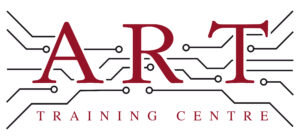Definition
Trace is a conductive pathway on a printed circuit board (PCB) that connects different electronic components. It is typically made of copper and serves as the electrical route for signals and power. Traces vary in width and thickness, depending on the current they need to carry. Understanding traces is essential for anyone involved in electronics manufacturing and repair, as they play a critical role in circuit functionality.
How It’s Used in the Industry
In electronics assembly, Trace is crucial for connecting components on PCBs. During the manufacturing process, traces are designed and etched onto the board to create pathways for electrical signals. Technicians use soldering methods to attach components to these traces securely. In rework, if a trace is damaged, it may require repair using techniques like jumper wires or soldering. For both trainees and experienced professionals, mastering the understanding of traces is vital for ensuring circuit integrity and functionality, as they directly affect the performance of electronic devices.
History & Origins
The use of Trace in electronics manufacturing became common in the mid-20th century with the advent of printed circuit boards (PCBs). The development of IPC standards in the 1960s helped establish guidelines for trace design and manufacturing processes. As technology advanced, the miniaturisation of components and the demand for reliable electronic devices made the design and implementation of traces increasingly important, leading to innovations in PCB manufacturing techniques.
Variations
There are various types of Trace used in PCBs, including surface traces, which are found on the top layer, and buried traces, which are embedded within the layers of the board. Traces can also differ in their width and thickness, affecting their current-carrying capacity. Compared to vias, which connect traces between different layers, traces are typically more straightforward and are designed for direct component connections. Understanding these variations helps technicians optimise PCB design for specific applications.
Modern Applications
Today, Trace is integral to electronics production, especially in surface mount and through-hole assembly. It ensures reliable connections between components, which is crucial for device performance. Modern PCB designs often adhere to IPC standards, ensuring that traces meet quality and reliability benchmarks. As electronic devices become more complex, the precision in trace design and manufacturing is vital for compliance with industry standards and the overall success of electronic products.
Practical Tips & Training
When working with Trace, it is important to use appropriate tools, such as multimeters for testing connectivity and continuity. Safety precautions should be taken to avoid damaging traces during soldering or rework. Regular inspection techniques, like visual checks and automated optical inspection (AOI), can help identify potential faults. Structured training and certification in electronics are essential for mastering trace design and repair, ensuring technicians have the skills needed to maintain high-quality standards in their work.


